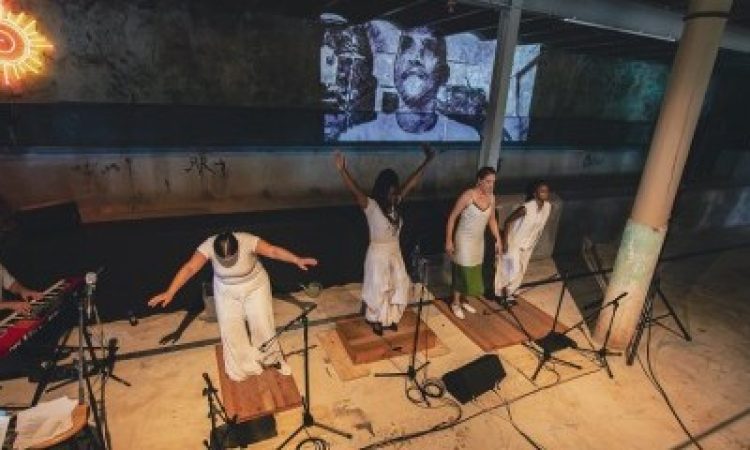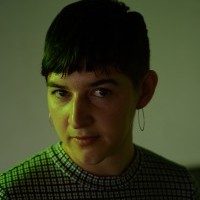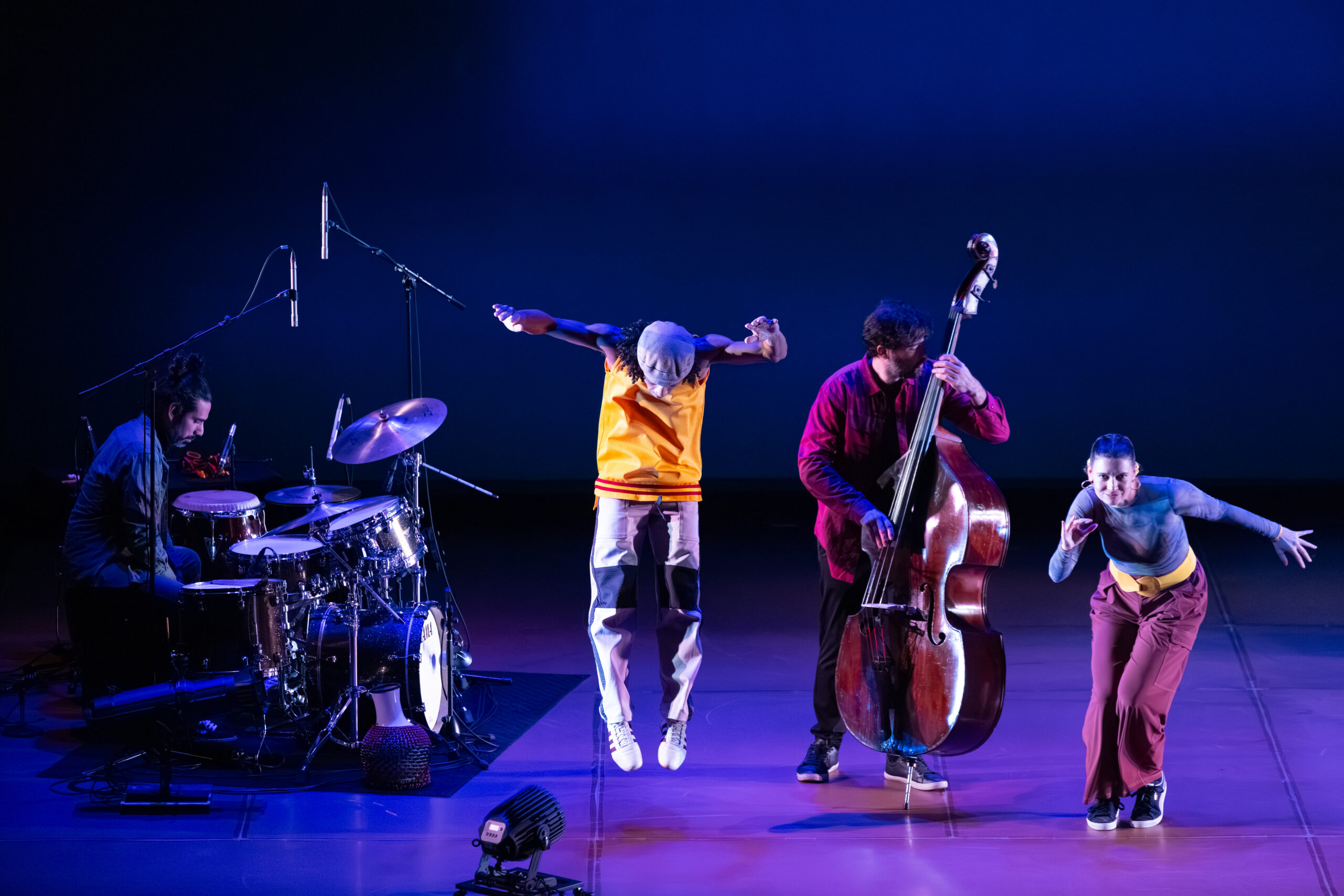Trouble the Water begins with a burst of sound from many directions. Bethlehem Roberson’s voice flies up from the concrete pit of the now-defunct Kelly Pool in front of the audience, a river of melody punctuated by strikes and scuffs behind us. We turn to see Pamela Hetherington, her tap shoes ringing against the wooden walkway where stragglers are still entering.
Philadelphia Jazz Tap Ensemble’s sounds and movements activate the vacant pool turned exhibition space in the depths of Fairmount Water Works, the ornate building which once served as Philadelphia’s source of clean water.
In a break between sections, Hetherington explains that the performers wanted to make a piece about “escaping in your mind to a place of revolutionary rest.” This desire shines through in tender moments. Destiny Bugg and Kathryn Schweingruber share a fluid duet atop the concrete barrier between two hollows of the pool. They lean on each other, arms moving in soft, wide arcs, until they come to rest, standing shoulder to shoulder holding hands.
At another moment, Roberson pours water from a watering can into two tubs, singing and gently tapping on the sides with her fingertips.
I wonder about menacing memories lurking in the corners as Bugg speaks into a microphone to an unseen someone.
“We may have to go underwater… I can swim… We can breathe.”
An infamous photograph hangs on the wall behind me of a white hotel owner pouring muriatic acid into a pool where activists were swimming to protest his segregationist policies. The installation surrounding the performance, Pool: A Social History of Segregation, tells the story of the segregation of America’s pools, a history whose repercussions ripple into today. Black children are six times more likely to die from drowning than white children, informs one poster. Present too are the voices of Black athletes and activists who continue to fight for equity in the water.
During the performance, the shadows stay in the corners for the most part. The mood is contemplative, structured around poems, songs, and “psalms,” with words by Hetherington and melodies by various jazz composers. I find Hetherington’s words opaque at times; they are general in a way that keeps me at a distance. “Hold on as we go across the bridge… the bridge of hands we built to save one save all…”
Rhythm carries me through; each of the performers shine in moments of complex rhythmic interplay.
“Bom bom bom…”
Roberson builds up a melody, making her way across the pool to the tarimas (wooden percussion boxes) placed near the two musicians. When she arrives, she adds in stomps, synthesizing body percussion and singing effortlessly, riding the wave of the melody as she creates it. Roberson calls herself a vocussionist; this synthesis of body and vocal sounds is baked into her performance.
Madison Rast joins Roberson on the bass, doubling her stomps so the beat reverberates through the space. The melody forms words.
“Lord Almighty… see my people through.”
Bugg steps next to Roberson, finding the openings in the melody with her tap shoes, giving swing and life to the space around and between the notes. Roberson pulls the song into a new register, belting the refrain. Her voice rings out clear and powerful.
She speaks. Taking us through memories of water; fire hydrants spraying, childrens’ feet pattering against plastic pools, a Sister at church singing wade in the water…
Bugg and Schweingruber step into tubs of water on either side of Roberson. Schweingruber plunges her hands into the water and lets it flow back into the tub. Bugg’s feet tap and stomp the surface of the water with precision, creating a sloshing, swishing rhythmic undercurrent. Schweingruber reaches for Roberson’s hand while her other arm swipes through the space. Bugg takes Roberson’s other hand and the three of them swim towards us, pushing through invisible, resistant water.
I always appreciate when museums incorporate performing artists, especially local ones, into their programming. It’s an acknowledgement of the cultural work artists do engaging with our social histories. Curators Homer Jackson and Valerie Erwin’s SPLASH/CONCESSIONS series allowed different performers and chefs to bring their own perspectives to the exhibition. Even with some fringes of thought left dangling, I felt the communal effort of putting together the event. Reverberations of the rhythms carried me through the Water Works and out into the city.
Trouble the Water, Philadelphia Jazz Tap Ensemble, Fairmount Water Works, August 13 and 27.
Trouble the Water will also be performed in the Philadelphia Fringe Festival on September 9th.






